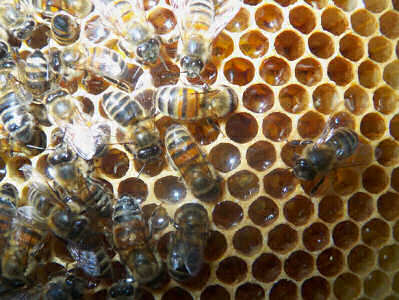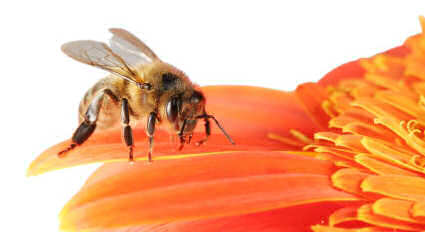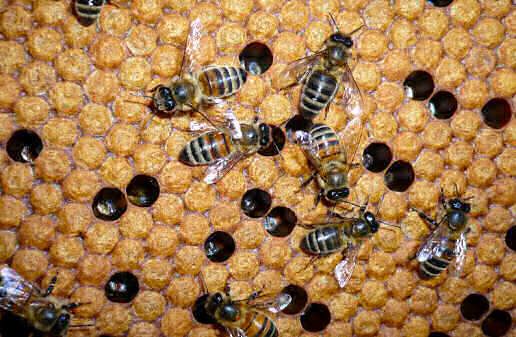Worker Bees

Worker bees are sterile females and the most numerous and hard working members of the colony. A healthy colony may contain 80,000 worker bees or more at its peak growth in early summer but decline to around 10,000 during the winter.
Workers build and maintain the nest and care for the brood. They build the nest from wax secreted from glands in their abdomen. The hexagonal cells, or compartments, constructed by the workers are arranged in a latticework known as the comb. The cells of the comb provide the internal structure of the nest and are used for storage of the developing young bees and all the provisions used by the colony. Comb used for storage of honey is known as honeycomb.
Workers leave the hive to gather nectar, pollen, water, and propolis, a gummy substance used to seal and caulk the exterior of the nest. They convert the nectar to honey, clean the comb, and feed the larvae, drones, and the queen. They also ventilate the nest and when necessary, defend the colony with their stings. Workers do not mate and therefore cannot produce fertile eggs. They occasionally lay infertile eggs, which give rise to drones.

Collecting pollen is vital for the bee to produce honey
Besides gathering and storing food for all the members of the colony, the workers are responsible for maintaining the brood at
33.9°C (93°F), the optimum temperature required for hatching the eggs and rearing the young. When the nest or hive becomes too hot the workers collectively ventilate it by fanning their wings. During cool weather, they cluster tightly about the nursery to generate heat.
The eggs, which are laid one per cell, hatch in three days. The larvae are fed royal jelly for at least two days and then pollen and nectar or honey. Each of the hundreds of larvae in a nest or hive must be fed many times a day.
Worker bees crawling across honeycomb
The workers that develop early in the season live extremely busy lives, which, from egg to death, last about six weeks. Worker bees reared late in the fall usually live until spring, since they have little to do in the winter except eat and keep warm. Unlike other species of bees, honeybees do not hibernate; the colony survives the winter as a group of active adult bees. Workers can sting but only as a defence mechanism to protect the colony. Although once doing so, the bee unfortunately dies.

Worker bees on sealed brood
